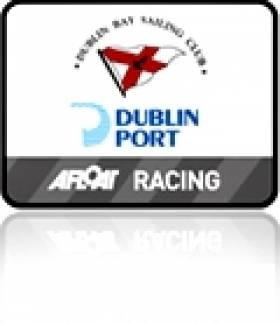Displaying items by tag: INSC
INSC Learn to Sail Boats take Line Honours in DBSC's Spring Chicken Series
#dbsc –Dun Laoghaire's Irish National Sailing (INSC) are off to a flying start in boats in the DBSC Spring Chicken Series that got underway yesterday on Dublin Bay. Here's the INSC's Kenneth Rumball on the day's adventures in the Cruiser and sportsboat series sponsored by Viking Marine.
After last week's postponement, three INSC 1720s ventured out into a building westerly breeze with a lumpy sea and dark wintery drizzle for the start of yesterday's DBSC Spring Series.
Hats, gloves and full waterproofs were the order of the day. After a short postponement, our 1720s got away in the third start. Kenneth Rumball, Noel Butler and Andrew Boyle were the three skippers of the boats. Noel and Kenneth started at the pin end with a strong pin bias while Andy was a little bit further down the line. We tackled the long port leg leaving most of the boats in our start in our wake and catching some of the start 2 boats by the first mark.
Even though the breeze was building and there was talk of rigging the fractional kite as opposed to the masthead, INSC 1 (Kenny) went for the big kite and gybed away after the windward mark into the stronger tide. INSC 2 (Noel) opted for the fractional kite and stuck to the right of the run. INSC 3 (Andy) had also gone for the masthead and was tearing down the middle of the run. By the leeward mark, INSC 1 rounded just behind the RStGYC 1720 Luna Sea with INSC 3 and then INSC 2.
INSC 2 and INSC 3 enjoyed a fantastic battle throughout the race with INSC 2 only getting ahead due to a suspect spinnaker hoist!
The three INSC boats continued to work through the pack and by the last downwind, INSC 1 was just behind Luna Sea. With some great teamwork from the crew, we gybed on Luna Sea on the line, pipping them to a line honours finish in the first race of the DBSC Spring Series.
A great start for INSC 1 and great racing for all INSC 1720s in our race training program!




























































